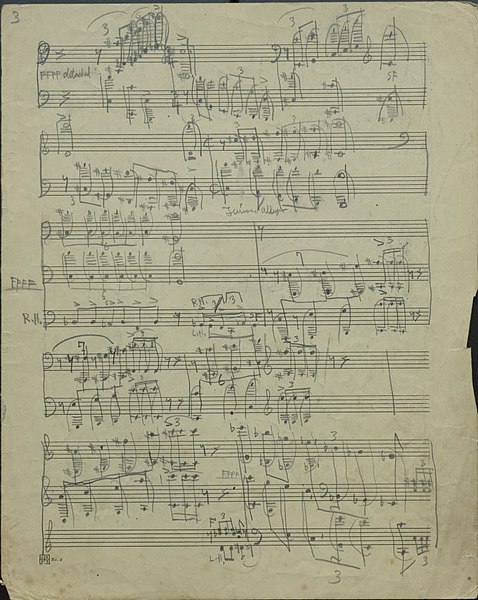Lou Silver Harrison was an American composer, music critic, music theorist, painter, and creator of unique musical instruments. Harrison initially wrote in a dissonant, ultramodernist style similar to his former teacher and contemporary, Henry Cowell, but later moved toward incorporating elements of non-Western cultures into his work. Notable examples include a number of pieces written for Javanese style gamelan instruments, inspired after studying with noted gamelan musician Kanjeng Notoprojo in Indonesia. Harrison would create his own musical ensembles and instruments with his partner, William Colvig, who are now both considered founders of the American gamelan movement and world music; along with composers Harry Partch and Claude Vivier, and ethnomusicologist Colin McPhee.
Portrait of a young Harrison at the piano, c. early 1940s
Lou (left) and Bill Harrison (right), c. early 1920s
Harrison considered Henry Cowell (pictured) his greatest musical inspiration and one of his closest friends
Harrison developed a deep interest in the traditional gamelan ensembles of southern Indonesia (pictured)
Henry Dixon Cowell was an American composer, writer, pianist, publisher, teacher and the husband of Sidney Robertson Cowell. Earning a reputation as an extremely controversial performer and eccentric composer, Cowell became a leading figure of American avant-garde music for the first half of the 20th century — his writings and music serving as a great influence to similar artists at the time, including Lou Harrison, George Antheil, and John Cage, among others. He is considered one of America's most important and influential composers.
Photo from promotional flier for Cowell's 1924 Carnegie Hall debut
Henry Cowell playing the violin — aged 5 (c. 1902)
The original manuscript to Dynamic Motion (1916), showing the young Cowell's early methods for notating large piano clusters
Cowell playing the piano, demonstrating his "forearm" technique by slamming down with his right arm on the middle register, c. 1920s







